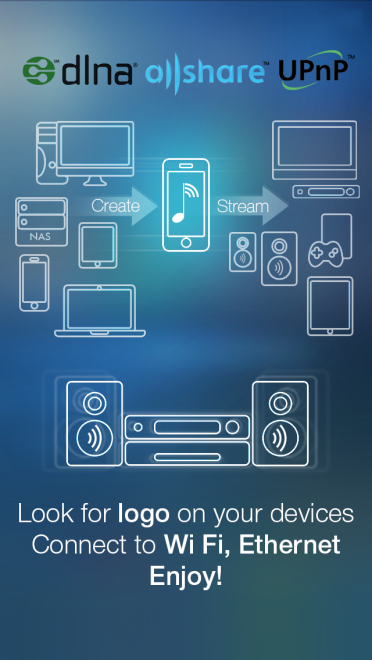

- Ps3 media server searching for renderers code#
- Ps3 media server searching for renderers windows#
ThumbnailsResolution- resolution of the thumbnails to be server to the renderer. It can specify which video containers require this delivery type (the other using soft subs)
HardSubs - encodes the subtitles text or bitmaps into the video stream. SoftSubs - delivers subtitles to the renderer as an external resource only some renderers support this. 
Subtitles - includes definition of subtitles rendering LimitImageResolution- If 'true' Serviio will resize images whose resolution is higher than 4096x4096 (specification maximum resolution) GenericTranscoding- defines transcoding configuration to be used in specific cases, like hard subs encoding and video stacking.ĪutomaticImageRotation- If 'true' Serviio will rotate images based on EXIF metadata (where present) so that they are correctly displayed on the screen OnlineTranscoding- defines transcoding configuration for online files. Transcoding- defines transcoding configuration for local/online files. ANY - takes into account both of the above and uses the higher from the two values.FILE_ATTRIBUTES - only takes into account the level computed from the file's characteristics (e.g.HEADER - only takes into accunt the level value stored in H264 header.H264LevelCheck - type of check for H264 level the device uses. name - format profile name to be sent to the device as a part of protocol info (DLNA_PN field), if different from the internal format profile name.mime-type - mime-type to be used as an identified of media files with this format profile.All the format profiles are defined for Generic profile and you should only change those that cause your media files to be unrecognized by your device. MediaFormatProfiles- defines set of media format profiles (or their changes) the renderer expects.
ResourceTransportProtocolHandler - a Java class implementing a specific additional code for handling resource transport includes manufacturer-specific logicĬontentDirectoryDefinitionFilter - a Java class implementing filter of library definition, needed by some devices simple - simple UPnp-type protocol info, used by non-DLNA devices like XBox 360ĭeviceDescription - defines how Serviio will be identified to the renderer - don't change this.DLNA - should be used for DLNA compliant devices.

ProtocolInfo - type of protocol info that will be published to the renderer.
HttpHeaders - detects device based on HTTP headers in the incoming requests. UPnPSearch - detects device by issuing a UPnP M-SEARCH request and (for the devices that support it) matches selected device description fields (see above) using the provided regular expression. alwaysEnableTranscoding - if true, it overides any user setting related to turn off transcoding default is falseĬontentDirectoryMessageBuilder - a Java class responsible for generating communication data - don't change thisĭetection - used to automatically detect the renderer. extendsProfileId - ID of a parent profile in a case the profile has one. id - ID of the profile, must be a unique value. Profile- includes values of a renderer profile DeviceDescription (and all/some of its sub-elements). These are the values that are inherited can be "overwritten" in the child profiles: This profile defines values that follow relevant specifications and doesn't include any transcoding definitions for local content. Generic Profile (id=1) should be used as a parent for most other profiles. Please note that not all the values are inherited (e.g. The remaining values will be retained from the parent Profile A. It means that Profile B can inherit from Profile A and only change or add certain values. Profiles in Serviio are based on inheritance. In order to add a new profile you'll have to add a new block to the file and restart Serviio. The basic structure of profiles.xml is following: assign your profile to your device (IP) in the console and Save the setting. Windows service or Linux/OSX process, not just the UPnP server via the console buttons
restart Serviio server this means restarting the actual Serviio server process, e.g. The process of getting the changes into effect is following: All the syntax and rules described below apply to this file as well. If you want to have your profile changes persisted across upgrades, you can add new profiles to a file config/user-profiles.xml. It is a simple XML file which you can edit in any text editor or even better in a XML editor (where you can facilitate schema validation). Profiles definition is stored in file config/profiles.xml in the Serviio installation directory. This little guide should help users to add a new renderer profile ("profile" from now on). TV) that is not yet officially supported by the latest release. This gives the users the means to make Serviio work with their rendering devices (e.g. Serviio includes the possibility to add / edit renderer profiles.







 0 kommentar(er)
0 kommentar(er)
